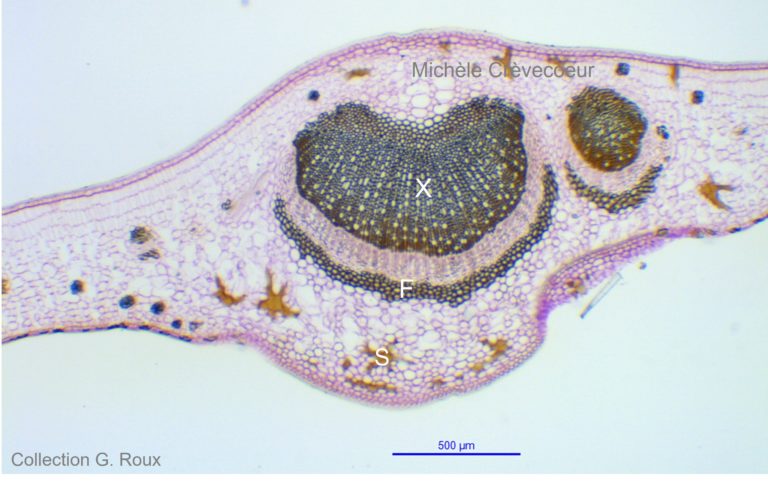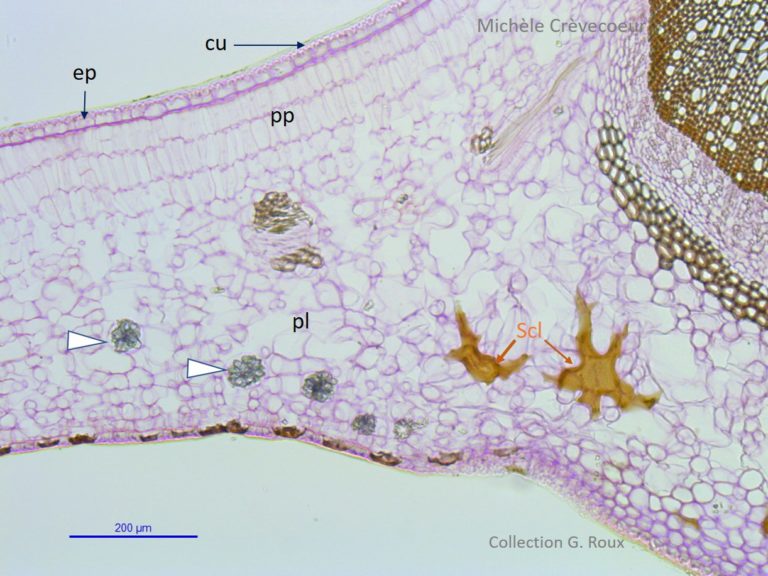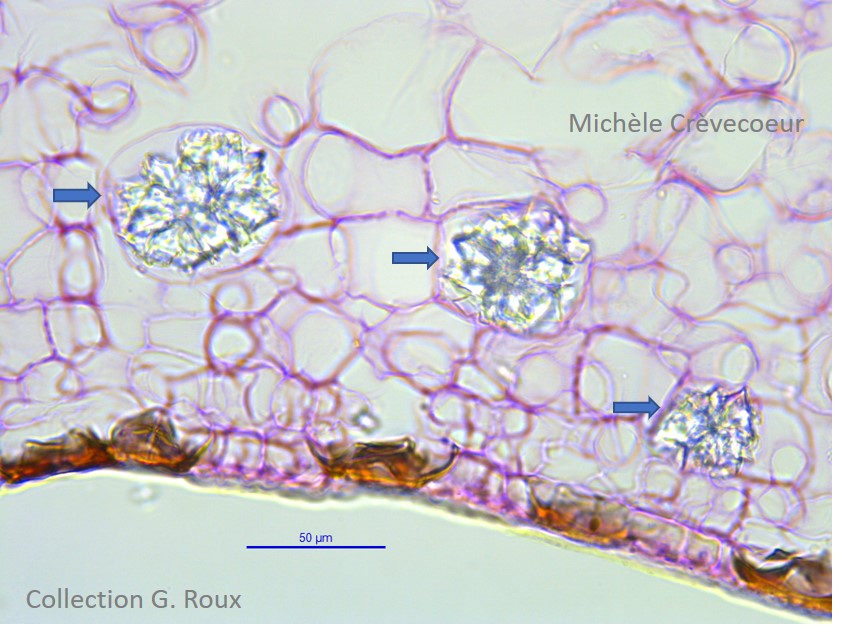Cross section in a leaf of camellia
Camellia , common name camelia or rose of winter, is an evergreen shrub or small tree in the Theaceae family and it is native from Japan. They are about 45 species of camellias in cultivation. The term tea is generally used for edible species and the term camelia for ornamental species.
It is very popular plant in gardens in which the plants are cultured for their beautiful flowers, mainly white, pink, or red and various combinations of these colors. The leaves tend to be deep green, elliptic with serrated edges and pointed tips and are usually glossy. They are variations in their length and texture.
Sections on this page are part of the Georges Roux collection. The first microphotograph illustrates a cross section at level of the main vein with xylem (x) and fibers (F) well apparent in the vascular bundle. Sclereids are observed (s) in the parenchyma. A lateral vein is observed on the right of the main vein.

Below part of the section at level of lamina. The mesophyll between epidermis of both faces of the leaf is heterogeneous with palisssade parenchyma (pp) toward adaxial face and spongy parenchyma (pl) toward the abaxial face. Large yellow sclereids (scl) and cells with oxalate calcium crystals (white arrows) are observed in both parenchyma. ep: epidermis with its cuticle (cu)

Below mesophyll at higher magnification with slereids (sclérite in french) on the left and cells containing oxalate crystals on the right (blue arrows)

